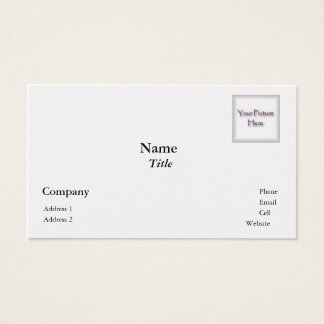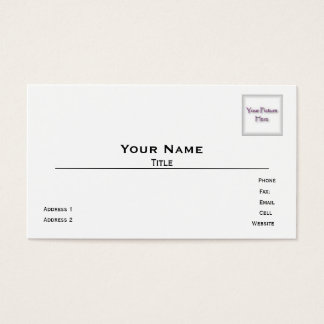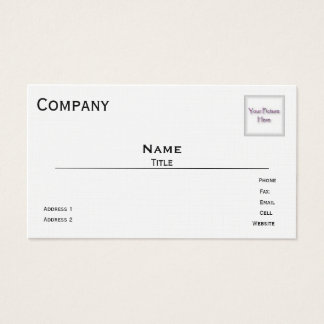Small Business Plans Explained
In it's simplest form, a business plan is a document that outlines the basics about your business, products, and services; the market you are targeting; the goals you have for your business; and how you will achieve those goals.
A business plan is one of several important plans you should have when you are starting a business, the others being a marketing plan and a financial plan. Your business plan should pull all three of these plans together, incorporating elements of your marketing plan and your financial plan into a comprehensive document. Think of your business plan as a map or blueprint that will guide your business from the start-up phase through establishment and eventually business growth.
Why You Really Do Need a Business Plan
There are many reasons why you need a business plan, although these reasons vary by the type of business you are starting and how you intend to use your business plan. But the common thread for all businesses is that a business plan is necessary.
After all, how can you get your business launched and thriving without any type of written plan to help you?
Some of the reasons you need a small business plan that may apply to you include:
A business plan is required if you are going to apply for a bank loan, pitch your business to investors, or bring in a business partner.
You won't truly be able to qualify your business idea without understanding your target market, researching the competition, and conducting a feasibility analysis — all parts of a business plan.
A good small business plan not only outlines where you are and where you want to be, but also helps you identify the specific actions you need to take to get there.
A business plan can provide essential background information on your business, strategy, and culture to employees, including managers and staff, as your business grows.
The financial section of your business plan can be the basis of your business budget and a useful tool for managing cash flow on a monthly basis.
So, you know you need a business plan. The next question to consider is what type of plan is the best fit for your small business.
Traditional Business Plans vs. One-Page Business Plans
There are actually many types of business plans, including start-up plans, internal planning documents, strategic plans, operations plans, and business plans created to focus on growth. Each of these types of business plans have different objectives, but all of these versions generally fall into one of two primary formats — a traditional business plan (also called formal or structured) or a simplified business plan (often called a lean or one-page business plan).
A traditional business plan is what most small business owners think about (and often fear) when they hear the term "business plan." It is usually a long and very formal document that has a vast amount of information and is pretty overwhelming for many new business owners.
A traditional business plan typically includes the following sections:
Executive Summary: A highlight of the most important information in your document (in case this is the only section read before a decision is made).
Company Description: Where you are located, how large the company is, your vision and mission, what you do and what you hope to accomplish.
Products or Services: What you are selling with emphasis on the value you intend to provide your customers or clients.
Market Analysis: A detailed overview of the industry you intend to sell your product or service in, and a summary of your target market and competition.
Marketing Strategy: An outline of where your business fits into the market and how you will price, promote, and sell your product or service.
Management Summary: How your business is structured, who is involved, and how the business is managed.
Financial Analysis: Details for financing your business now, what will be needed for future growth, as well as an estimate of your ongoing operating expenses.
The not-so-great news is that a traditional business plan takes a long time and an immense amount of research to complete. The good news is that not every business needs a traditional business plan. That brings us to the second business plan format — the simple or one-page business plan.
A one-page business plan is a streamlined and brief business plan that you can use as-is or as a starting point for a traditional business plan. While this is a leaner version of the traditional business plan, you will still need to gather information that is specific to your business in order to create a plan that is truly useful for you. Be prepared to answer the following questions as you create your simplified business plan:
Vision: What are you creating? What will your business look like in one year, three years, and five years?
Mission: What is your mission? Why are you starting this business, and what is the purpose?
Objectives: Are your business goals considered SMART goals? How will you measure success in achieving your goals?
Strategies: How are you going to build your business? What will you sell? What is your unique selling proposition (i.e., what makes your business different from the competition)?
Start-up Capital: What is the total amount of start-up capital you will need to launch your business?
Anticipated Expenses: What do you estimate your business's ongoing monthly expenses will be immediately after launch, in three months, in six months, and in one year?
Desired Income: What do you anticipate your business's ongoing monthly income will be immediately after launch, in three months, in six months, and in one year?
Action Plan: What are the specific action items and tasks you need to complete now? What are your future milestones? What will need to be accomplished by those milestones in order to meet your objectives?
Once you have answered each of these questions, you will have a working business plan that you can use immediately to start taking action in your business.
Tools to Help You Create a Better Small Business Plan
Creating a business plan will take you undivided time and attention, but there are business planning tools available to help streamline the process, many of them available for free. There are templates available, including a simple business plan template and a traditional business plan template. There are also many business plan tutorials available, including video business planning tutorials.
And let's not forget about all-in-one online tools like the SBA Business Plan Tooland services like RocketLawyer that take away a lot of the time required to format and organize your business plan. As you get started with your small business plan, explore these additional business planning tools to see how you can streamline the process even further.
One mistake many small business owners make is creating a business plan because they are told they need one, and then completely forgetting about it. Once you have business plan created, consider it an internal tool you use on an ongoing basis in your business, updating it as necessary so it remains current. Remember that the most effective small business plans are those that are used as a living document in the business to help guide decisions and keep your business on track.




No comments:
Post a Comment